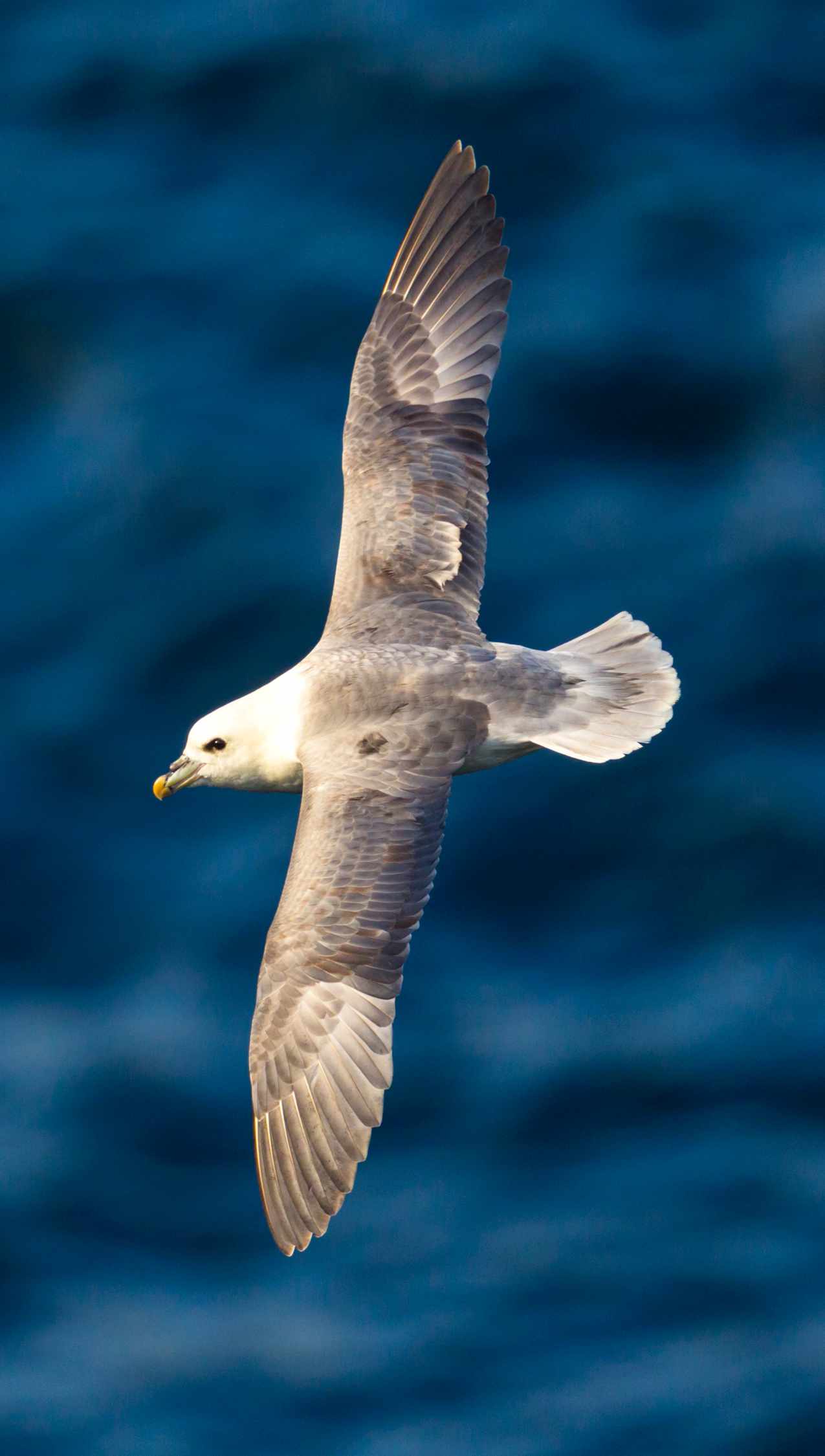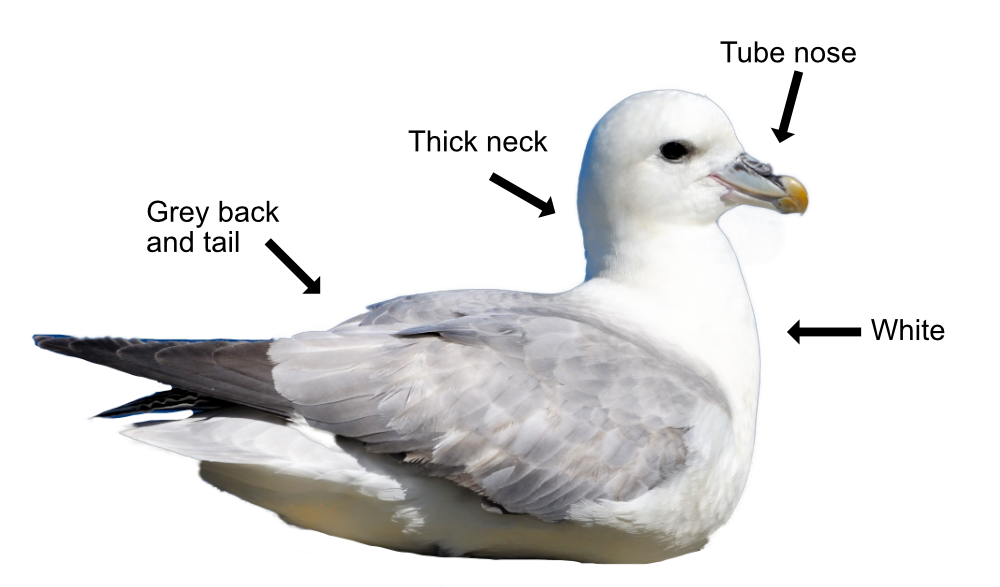
The Fulmar is a small 'tubenose' gull related to the much bigger Albatross. It is often seen riding the up draughts at its cliff face breeding site. They defend their nests from predators by spitting out a foul-smelling oil that not only stinks but can also kill. The oil is made in their stomachs and is a high-energy food source for chicks and for adults on long flights. The Fulmars seen in Britain are called the 'Northern Fulmar' to distinguish them from the bigger 'Southern Fulmar' found in Antarctica.

Fulmars look gull-like with thick necks and tubed nostrils that stand out. The specially adapted noses help them remove salt from their bodies, allowing them to happily drink seawater. They are white with a grey back, rump and tail. There is a dark smudge around the eye. They fly low over the sea on stiff wings, followed by a rapid series of shallow wing beats, gliding and banking to alternately show their white underparts and grey upperparts. Fulmars are mainly silent apart from a cackling call when nesting. Like a Swift, a Fulmar cannot stand or walk. They are built for flying or bobbing about on the sea with their tails held up.
Flocks of Fulmars will feed out at sea, often near fishing boats, feasting on the fish waste that is thrown overboard. They also plunge dive to eat shrimp, fish, squid, plankton and jellyfish.
Fulmars breed all around Britain and a Fulmar pair, who stay together for life, will use the same nest site year after year. The single egg is laid in May on a cliff ledge or rooftop with little other nest material. Both parents carefully look after it until it hatches 50 days later. The chick is fed by mum and dad and can fly after 45 days, becoming fully independent soon after though mum keeps an eye on it for the first two weeks. The youngster will then spend several years at sea, miles from land, and won't breed until it is 6 years old.
There are about 500,000 Fulmar pairs in Britain and numbers are slowly increasing, helped by the fishing industry and the offal thrown from boats. On the flip side, this makes them vulnerable to any changes in fishing practices. A Fulmar can live to be over 30 years old and have lots of stories about how the people of St Kilda tried to eat him.
Their Latin name is 'fulmarus glacialis' where 'fulmarus' comes from the Old Norse 'fulmar' meaning 'foul-mew' or 'foul-gull' because of the bird's habit of spitting out its foul-smelling oil. The English name has the same source. The 'glacialis' part comes from the Latin for 'icy'.